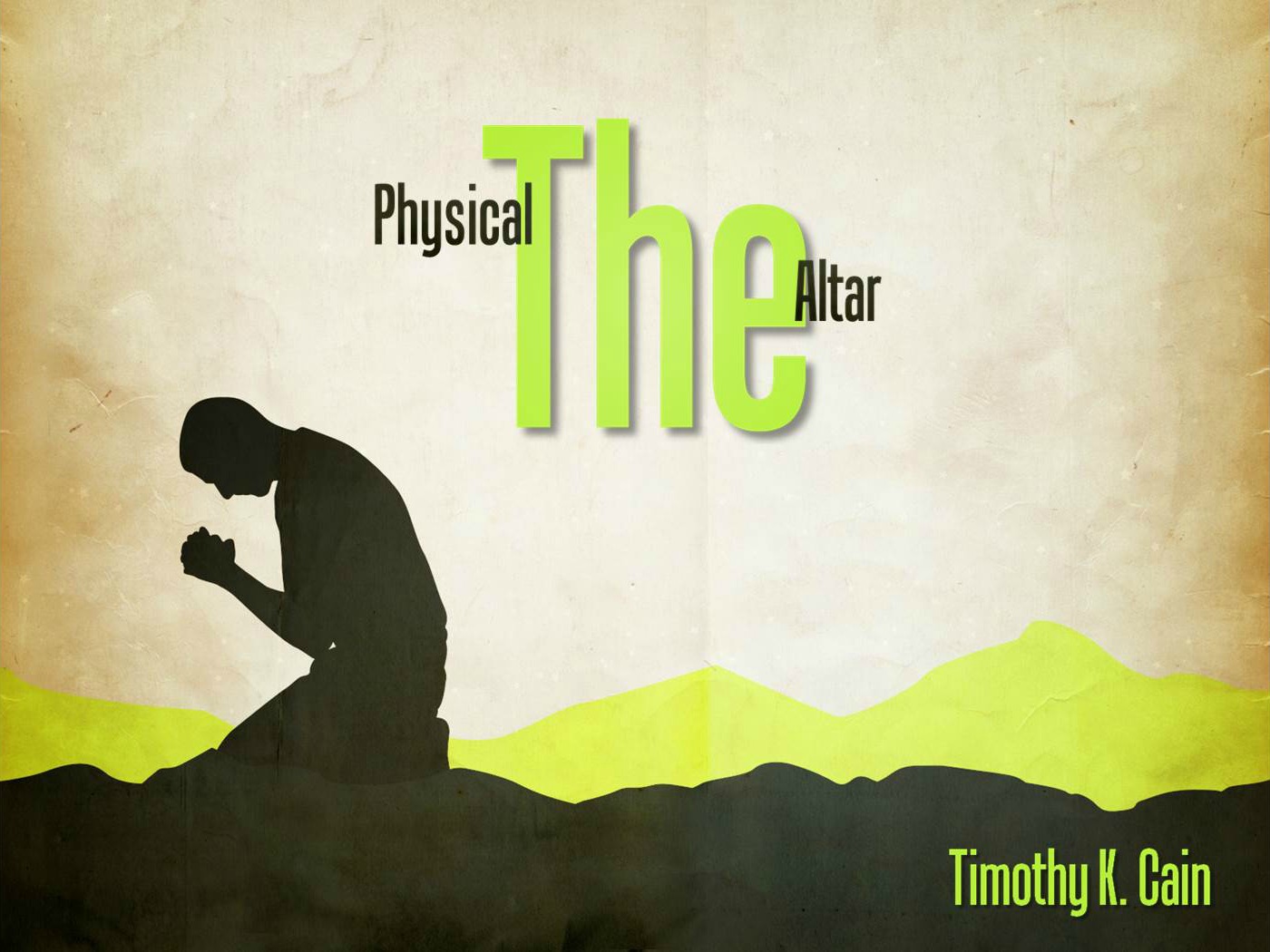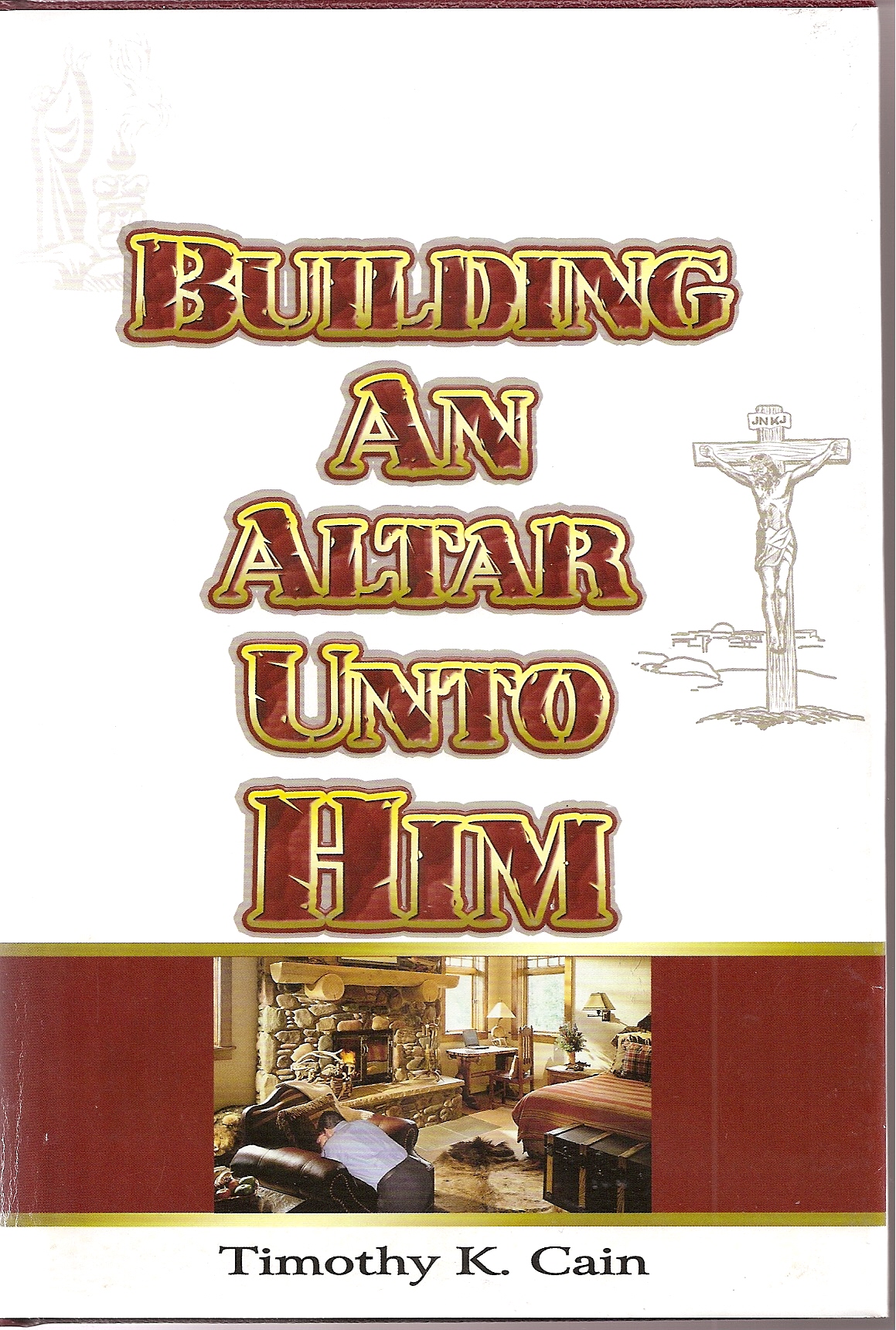Especially throughout the OT, the sacrificial rituals that were required to be performed were performed at altars. These altars were built either alone (prior to Exodus 20:24) or were attached to a sanctuary. For the purposes of this discussion, the word sanctuary is referring to the Tabernacle in the wilderness or the Temple (first or second), while sanctuary in NT biblical references might refer to altars built alone or in the Temple or Synagogue.

By Timothy K Cain
To View the Entire Article, Click Here
It must be stressed before I continue that what was acted out in the physical by the ANE Israelites can be and should be experienced in the spiritual today. I recall to our attention Galatians 3:24-25, “Wherefore the law was our schoolmaster to bring us unto Christ, that we might be the law was our schoolmaster to bring us unto Christ, that we might be justified by faith. But after that faith is come, we are no longer under a schoolmaster.” It is essential that one understand this concept, especially when relating the ANE biblical experiences to required modern-day experiences. In this context, we move forward to look at the altar as a physical structure throughout the Bible – OT and NT – and today, thus clarifying the necessity of the physical altar as described in Exodus 20 and the necessity for an altar experience in our everyday lives.
To this point, we have shown that the thread of altar use began, according to the Bible, with Noah in Genesis 8:20 and continued from generation to generation into the Sinai wilderness with Moses and the Israelites (Exodus 20). Before we continue further with our biblical perspective, let’s look at the meaning of the word altar and a brief historical perspective from a few other secular sources.
According to The New Strong’s Exhaustive Concordance of the Bible, the English word altar is used in the OT text 352 times and 22 times in the NT text. In the OT text, all but 4 uses of the word altar are from the Hebrew word mizbeach. The Hebrew word mizbeach as translated from the traditional Hebrew means “an altar, or altar.” This is from the primary root Hebrew word zabach, meaning “to slaughter an animal [usually in sacrifice]; kill, offer, [do] sacrifice, slaw.” In Ezra 7:17, use of the word altar is from the Hebrew word madbach of Chaldean origin, meaning “a sacrificial altar.” Madbach comes from the Hebrew/Chaldean primary root word debach, meaning “to sacrifice [an animal]; offer sacrifice.” The other three distinctive uses of the word altar in the OT are found in Ezekiel 43:15-16. Use of the word altar here is from the Hebrew word arieyl, meaning “the altar of the temple.” Another Hebrew form of arieyl is the word harel, meaning “the altar of burnt offering.” The Encycolpaedia Judaica reports that English word altar in the OT text is translated from the Hebrew word misbeah, derived from the root zbh, meaning “to slaughter [as a sacrifice].” Clearly, use of the word altar throughout the OT, as translated from these Hebrew words, provides a continuity of scriptural meaning and interpretation.
Using the same source of information (Strong’s), the English word altar is translated from the Greek text of the NT and used twenty-two times. With only one exception, use of the word altar is translated from the Greek word thusiasterion, meaning “a place of sacrifice, i.e. an altar.” The one exception is found in Acts 17:23 referring to the altar found on Mars’ Hill “TO THE UNKNOWN GOD.” The word altar here is translated from the Greek word bomos, meaning “a stand, i.e. (spec.) an altar,” or “an elevated place.” However, it should be noted that while the word means “altar,” bomos “refers to the heathen altar and thusiaterion refers to the altar of the true God.” It is important to consider the use and the definition(s) of the original words of scriptural text, especially when attempting to make accurate interpretation of Scripture for practical application in our lives.
To View the Entire Article, Click Here



